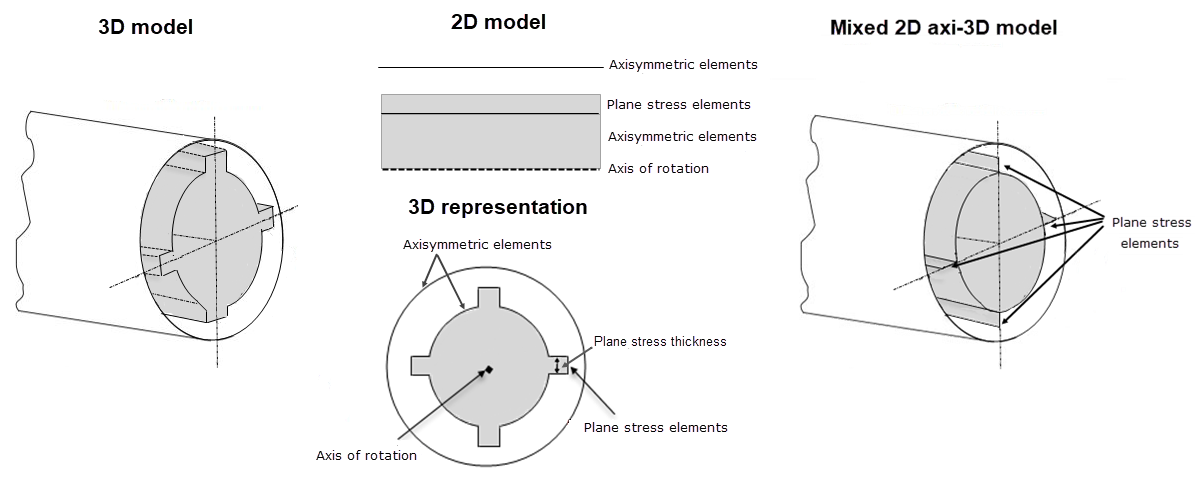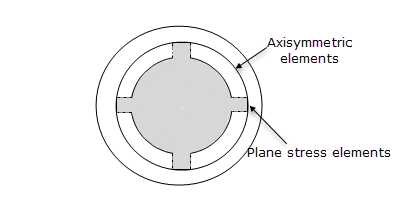Plane stress view factor calculation when modeling with axisymmetric or 3D elements
This section explains how the thermal solver computes the view factor for axisymmetric or mixed 2D axi-3D models with plane stress elements for radiation requests.
To compute the view factor for axisymmetric or mixed 2D axi-3D models with plane stress elements for radiation requests, the thermal solver transfers axisymmetric elements' properties to plane stress elements. This method simplifies the full three-dimensional (3D) calculations and significantly reduces the computation time. The solver computes radiation from edges of a plane stress element, only for the Monte Carlo method, when radiation enclosures contain edges of element types, such as axisymmetric, chocking, or plane stress. The following example represents a simplified 3D model with plane stress elements.

In this model, the plane stress elements break the axisymmetry. To calculate the view factor, the thermal solver uses a simplified axisymmetric radiation treatment. It applies certain optical properties to the plane stress elements to create axisymmetric elements as shown in the following figure.

The optical properties are modified to have a transparency as follows:
where:
- Rps is the radius of top plane stress edges.
- tps is the thickness of top plane stress.
- N is the number of plane stress elements.
Depending on which side a ray originates, the plane stress elements can be semitransparent or fully transparent:
- The elements are semitransparent when a ray travels from the external to the internal edges.
- The elements are fully transparent when a ray travels from the internal to the external edges.
For the view factor calculation, the thermal solver does not include the top plane stress surface that equals N tps, when the rays are moving outward from the internal edges.
